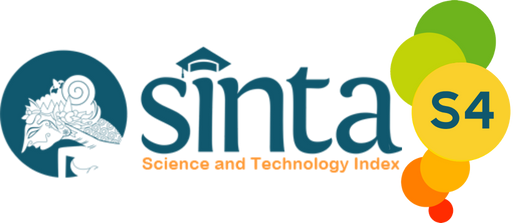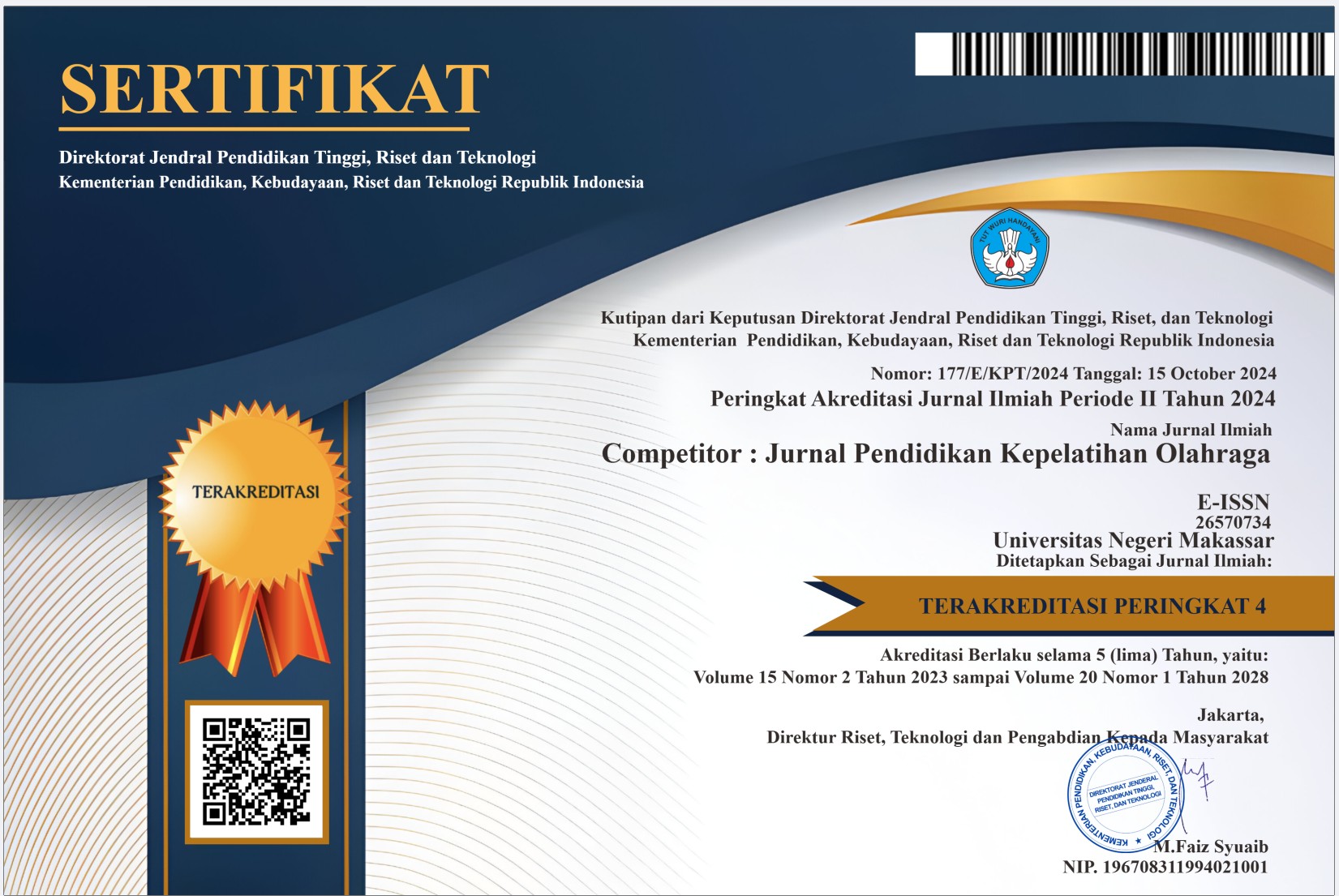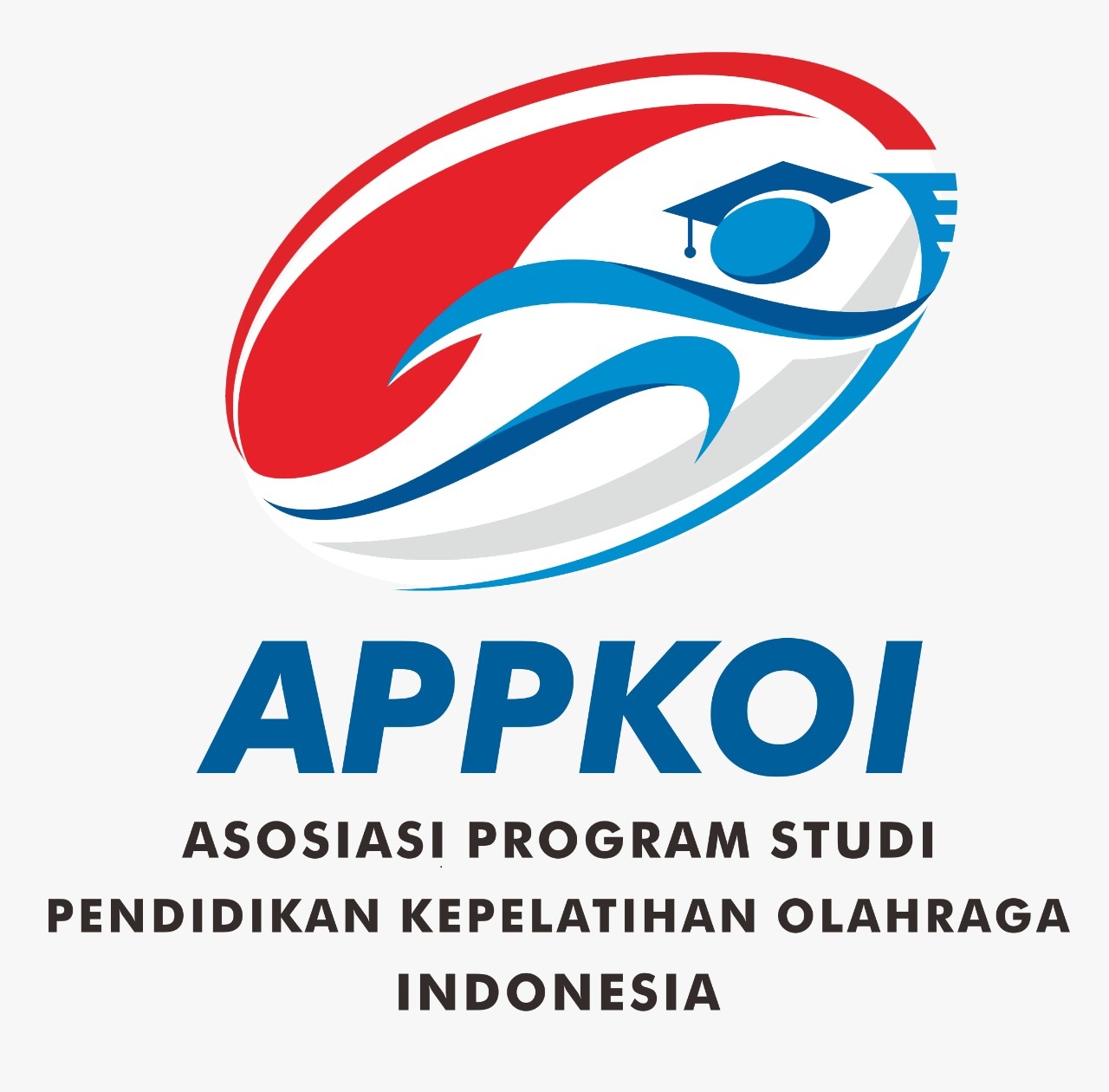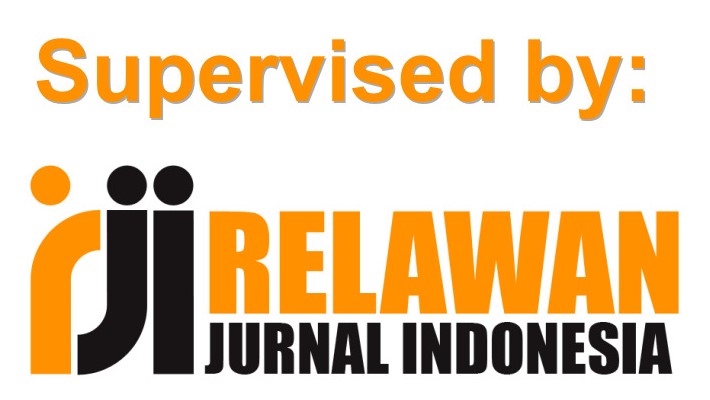CIPP Evaluation of the Archery Achievement Development Program for Surakarta Special Sports Middle Schools in 2024
DOI:
https://doi.org/10.26858/cjpko.v17i2.135Kata Kunci:
Evaluation; Archery Achievement; Development; Program; Special Sports Middle Schools.Abstrak
This study aims to evaluate the archery achievement development program implemented at the Special Sports Junior High School in Surakarta in 2024. Using a qualitative evaluative approach and a case study design, the research applies the context, input, process, and product evaluation model to analyze all dimensions of the program comprehensively. Data were collected through document analysis, structured questionnaires, and interviews with key stakeholders, including program managers, coaches, and athletes. Narrative descriptive analysis was employed to organize and interpret the data according to each evaluation component. The findings show that the program's objectives are highly aligned with national sports development goals and are supported by a strong vision shared among stakeholders. The input evaluation revealed excellent human resources and a rigorous athlete selection process, although significantly hindered by inadequate training facilities. The process component demonstrated well-structured and science-based training methods, including psychological preparation. In terms of outcomes, the program succeeded in producing high-performing athletes who achieved success at the national level. However, the lack of permanent training infrastructure presents a critical challenge to the program’s sustainability. The study concludes that while the program is effective in achieving its short-term goals, long-term improvements must prioritise the provision of dedicated training facilities to support continued athlete development.
Referensi
Amali, Z. (2022). Kebijakan olahraga nasional menuju Indonesia Emas tahun 2045 [National sports policy towards a golden Indonesia in 2045]. Jurnal Olahraga Pendidikan Indonesia (JOPI), 2(1), 63–83. https://doi.org/10.55081/jopi.v2i1.197
Bompa, T. O., & Buzzichelli, C. (2019). Periodization: Theory and methodology of training (6th ed.). Human Kinetics.
Cheng, Z., Wang, Z., Wang, C., & Wang, J. (2023). ArcheryVis: A visual analytics tool for archery performance data. In G. Bebis et al. (Eds.), Advances in Visual Computing. ISVC 2023. Lecture Notes in Computer Science, vol 14495. Springer, Cham. https://doi.org/10.1007/978-3-031-48992-3_41
Henriksen, K., Larsen, C. H., & Christensen, M. K. (2023). Talent development in sport: The role of the environment. Frontiers in Sports and Active Living, 5, 1127151. https://doi.org/10.3389/fspor.2023.1127151
Jannah, M. (2017). Kecemasan dan konsentrasi pada atlet panahan [Anxiety and concentration in archery athletes]. Jurnal Psikologi Teori dan Terapan, 8(1), 53-60. https://doi.org/10.26740/jptt.v8n1.p53-60
Ministry of Youth and Sports. (2024). Peraturan Menteri Pemuda dan Olahraga Nomor 11 Tahun 2024 tentang Sentra Pembinaan Olahraga Prestasi di Daerah. Ministry of Youth and Sports of the Republic of Indonesia.
Kim, Y., Kim, J., & Kim, J. (2021). The effectiveness of psychological skills training for archery athletes: A meta-analysis. International Journal of Sport and Exercise Psychology, 19(5), 710-726. https://doi.org/10.1080/1612197X.2020.1768363
Parena, A. A., Rahayu, T., & Sugiharto, S. (2017). Manajemen program pembinaan olahraga panahan pada pusat pendidikan dan latihan pelajar (PPLP) Provinsi Jawa Tengah. Journal of Physical Education and Sports, 6(1), 1-8.
President of the Republic of Indonesia. (2021). Peraturan Presiden Nomor 86 Tahun 2021 tentang Desain Besar Olahraga Nasional. State Secretariat of the Republic of Indonesia.
Stufflebeam, D. L. (2003). The CIPP model for evaluation. In D. L. Stufflebeam, G. F. Madaus, & T. Kellaghan (Eds.), International handbook of educational evaluation (pp. 31–62). Kluwer Academic Publishers. https://doi.org/10.1007/978-94-010-0309-4_4
Stufflebeam, D. L., & Shinkfield, A. J. (2007). Evaluation theory, models, and applications. Jossey-Bass.
Suharullah, S., & Nawir, N. (2019). Pembinaan olahraga usia dini [Early age sports development]. Badan Penerbit Universitas Negeri Makassar.
Undang-Undang Republik Indonesia Nomor 11 Tahun 2022 tentang Keolahragaan. (2022). Lembaran Negara Republik Indonesia Tahun 2022 Nomor 110.
Vanagosi, K. D., & Dewi, P. C. P. (2019). Evaluasi program pembinaan prestasi cabang olahraga panahan di Bali. Jurnal Penjakora, 6(1), 24-33. https://doi.org/10.23887/penjakora.v6i1.17353
Zhang, G., Zeller, N., Griffith, R., Metcalf, D., Williams, J., Shea, C., & Misulis, K. (2011). Using the context, input, process, and product evaluation model (CIPP) as a comprehensive framework to guide the planning, implementation, and assessment of service-learning programs. Journal of Higher Education Outreach and Engagement, 15(4), 57-84.
Unduhan
Diterbitkan
Terbitan
Bagian
Lisensi
Hak Cipta (c) 2025 Sektiawan, Nur Subekti, Nurhidayat (Author)

Artikel ini berlisensi Creative Commons Attribution 4.0 International License.





















